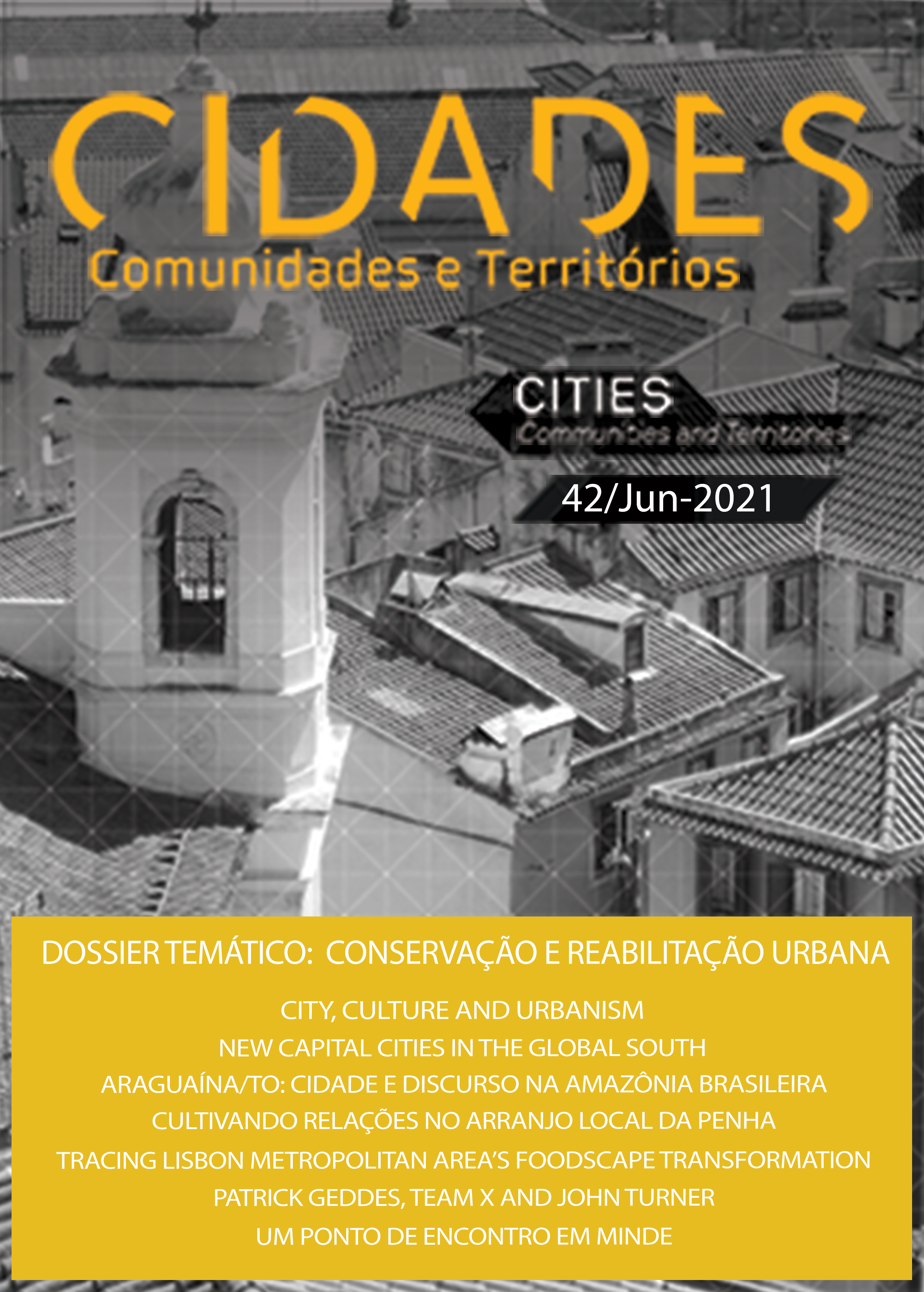Cidade, cultura e urbanismo
Aprendendo com Assunção
Palavras-chave:
plano mestre, participação da comunidade, colaboração, políticas públicas, AssunçãoResumo
Este artigo examina a formulação, implementação e motivos da suspensão do Plano Diretor do Centro Histórico de Assunção (PlanCHA), Paraguai. Em vez de um plano diretor tradicional, a proposta vencedora do concurso internacional organizado pelo Governo Nacional do país em 2014 foi um processo mestre composto por dezenas de ações participativas top-down e bottom-up, articuladas por dez estratégias iniciais. A pesquisa realizada no PlanCHA fez parte das investigações em curso no Nomads.usp, Centro de Estudos Vivos Interativos do Instituto de Arquitetura e Urbanismo da Universidade de São Paulo, Brasil, sobre processos de tomada de decisão participativa no contexto de intervenções urbanas em várias cidades ao redor do mundo. Como no caso de Assunção, priorizamos planos de intervenção urbana que, além das ações presenciais, incluem plataformas de participação digital. A pesquisa sobre o PlanCHA teve como objetivo compreender as questões envolvidas na implementação de um plano de ação que incluiu e dependeu totalmente da participação de gestores públicos, políticos, organizações não governamentais, universidades, corretores imobiliários e comerciantes para o seu sucesso, numa capital cuja população praticamente não tem experiência de em processos de tomada de decisão pública. Por fim, o artigo lista algumas hipóteses para a interrupção do Plano, categorizadas por razões administrativas, políticas e socioeconómicas. Entrevistámos a equipa vencedora em Madrid e a equipa parceira de arquitetos paraguaios que implementaram o projeto localmente. Em Assunção, também encontramos historiadores, membros e ex-membros do governo nacional e local, agentes imobiliários, representantes comunitários, produtores culturais, moradores e pesquisadores académicos. Fizemos várias visitas técnicas ao Centro Histórico de Assunção e estudámos documentos históricos, urbanos, demográficos, académicos e jornalísticos.
Referências
Asuncion (2017). ASU Viva, Asuncion: Municipality of Asuncion. https://bit.ly/2P6pVF4.
Asuncion (2016). Plan de Manejo Reserva Biológica Banco San Miguel Y Bahía de Asunción. Asuncion: Municipality of Asuncion. https://bit.ly/2lJxVyg.
Castells, M. (2013). Redes de indignação e esperança: movimentos sociais na era da Internet. Translated from Spanish by Carlos Alberto Medeiros. Rio de Janeiro: Zahar.
Causarano, M. (2012). Cambios del Carácter Público y la Centralidad del Centro Histórico. In Flores, A. R. (Coord.), Paraguay: Una Perspectiva. Las Centralidades Actuales y las Posibles (pp. 79-95). Quito: Olacchi. https://issuu.com/patrimoniobogota/docs/centralidades_paraguay_e-book.
CIA. (2018). CIA World Factbook 2018. [Online] https://bit.ly/1wcXOVZ.
Cristaldo, J. C., Britez, G. (2018). Being on the map: survey and participatory characterization in Chacarita Alta. Translated from Spanish by Marcelo Tramontano. V!RUS Journal, n. 16 [online]. http://www.nomads.usp.br/virus/virus16/?sec=5&item=88&lang=en.
DGEEC (2016). Principales resultados de pobreza y distribución del ingreso. EPH 2016. Asuncion: DGEEC. https://bit.ly/2Iz1tb2.
DGEEC (2012). Atlas Demográfico del Paraguay, 2012. Asuncion: DGEEC. https://bit.ly/2lzyhaF.
DGEEC (2014). Informe del Censo Poblacional del Bañado Norte. Asuncion: DGEEC.
Diguet, C. (2018). L’urbanisme transitoire: optimisation foncière ou fabrique urbaine partagée? Paris: IAU-IDF. https://bit.ly/2lytvtY.
Fernández, B. (2015). Paraguay: Un país en una lengua misteriosa y singular. Harvard Review of Latin America, Territory Guarani (Spring 2015) [online]. https://bit.ly/2ySq4I7
Fernández, L. S., Sánchez-Barba, M. (ed.) (1989). Historia general de España y América. Volume 15, Tomo XV. Madrid: Rialp. https://bit.ly/2IACiVs.
Galeano, E. (1971). Las Venas Abiertas de América Latina. Montevideo: Monthly Review.
ICES (2014). Área Metropolitana de Asunción Sostenible: Plan de acción. Asuncion: ICES/BID. https://bit.ly/2KnMJ3z.
IMF (2017). World Economic Outlook Database 2017 [online]. https://bit.ly/2hF0zSV.
Jacobs, J. (1961). The Death and Life of Great American Cities. New York/Toronto: Vintage Books.
Masi, J. R. (2011). Un repaso de la arquitectura en 200 años de historia. Paraguay.com, [online]. https://bit.ly/2KqYlD3.
Morin, E. (2005). Introduction à la Pensée Complexe [1990]. Paris: Seuil.
Paraguay (2017). Encuesta sobre acceso y uso de Internet en Paraguay. Asuncion: Senatics. https://bit.ly/2J6rUsE.
PlanCHA (2015a). Plan CHA: Plan Maestro de Revitalización del Centro Histórico. Síntesis del Resumen Ejecutivo del Documento del Plan. Asuncion: SNC. http://plancha.gov.py/sinopsis-del-plan-cha-2/.
PlanCHA (2014a). Asunción Laboratório Abierto. Tomo 1: Documentación, diagnóstico, objetivos y referencias. Asuncion: PlanCHA. http://plancha.gov.py/texto-completo-del-plan/tomo-1/.
PlanCHA (2014b). Asunción Laboratório Abierto. Tomo 3: Participación ciudadana entorno al PlanCHA. Asuncion: PlanCHA. http://plancha.gov.py/texto-completo-del-plan/tomo-3/.
PlanCHA (2014c). Asunción Laboratório Abierto. Tomo 2: Visión urbana de futuro: 10 estrategias institucionales y proyectos piloto. Asuncion: PlanCHA. http://plancha.gov.py/texto-completo-del-plan/tomo-2/.
PlanCHA (2015b). Project website. [online] http://plancha.gov.py/plan-cha/.
Rubiani, J., Tramontano, M. (2018). Urban memories, planning futures. Translated from Spanish by Marcelo Tramontano. V!RUS Journal, n. 16, 2018. [online]. https://bit.ly/2N9WwbY.
UNDP (2013). The Rise of the South: Human Progress in a Diverse World. Human Development Report 2013. New York: UNDP. https://bit.ly/1jtTjS6.
Downloads
Publicado
Edição
Secção
Licença
Direitos de Autor (c) 2021 Marcelo Tramontano

Este trabalho encontra-se publicado com a Licença Internacional Creative Commons Atribuição-NãoComercial-SemDerivações 4.0.
CIDADES, Comunidades e Territórios by DINÂMIA'CET-Iscte is licensed under a CC-BY licence.







